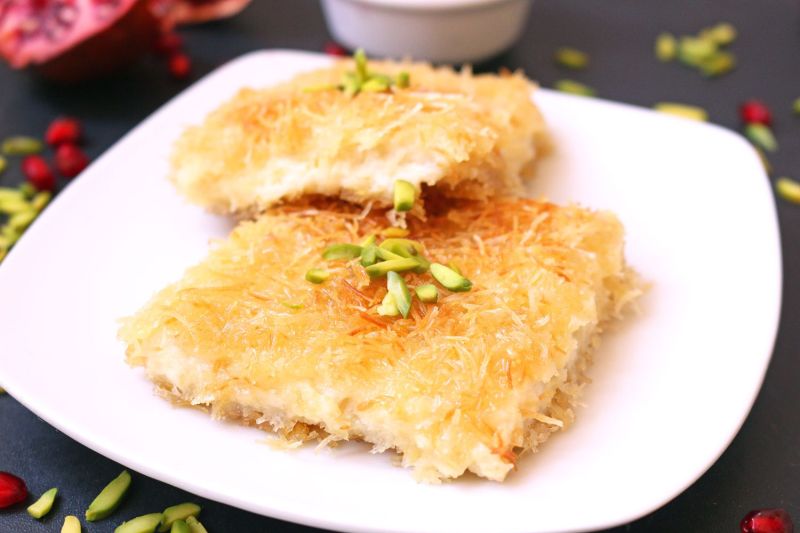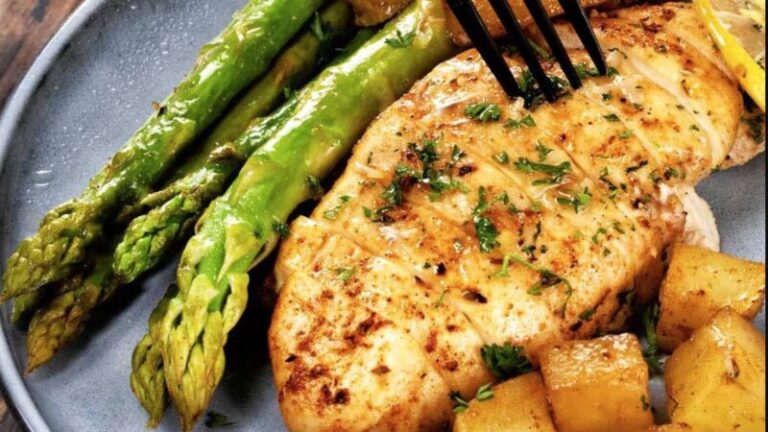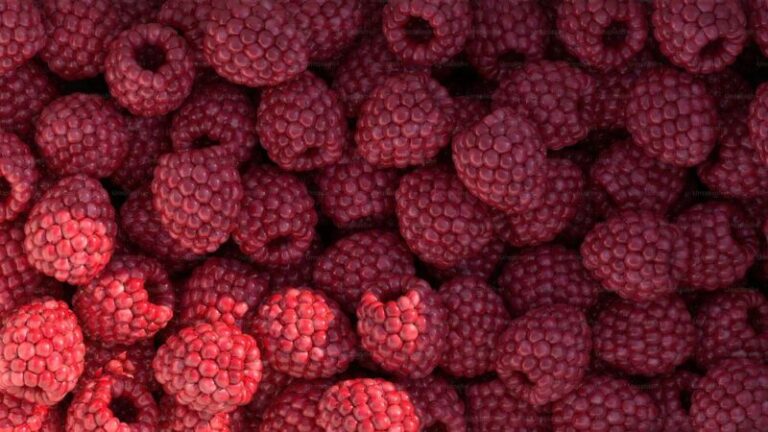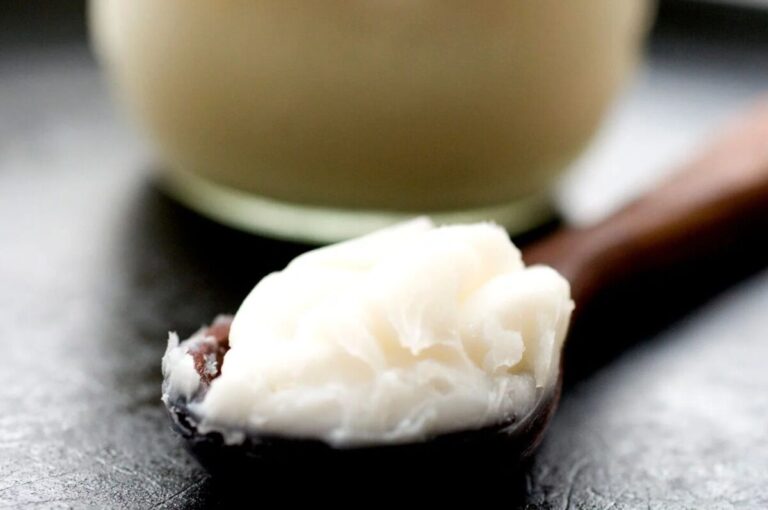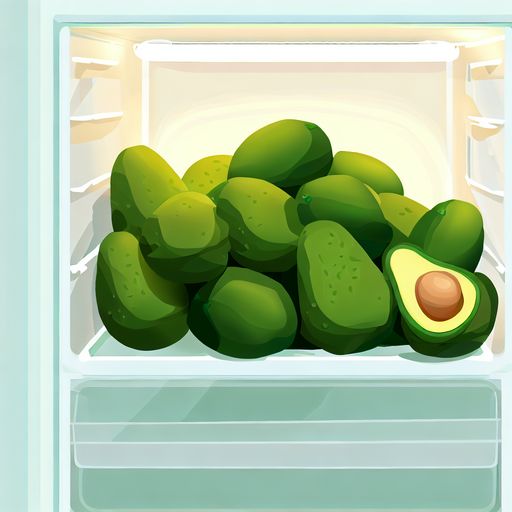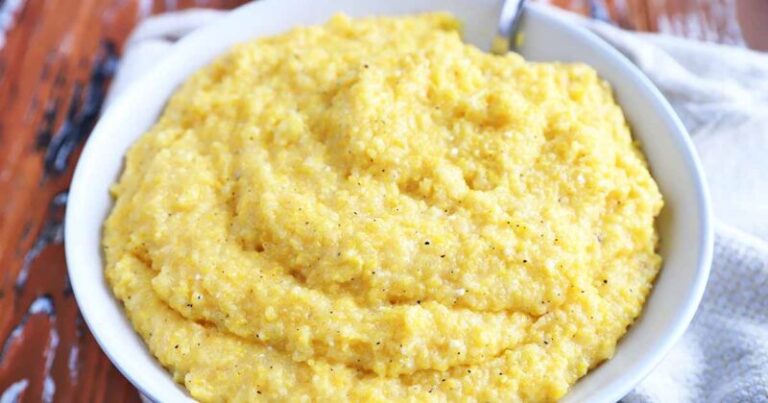What Does Kunafa Taste Like?
Kunafa. Even just saying the name is enough to make your mouth water if you know what this indulgent Middle Eastern dessert tastes like. With its crispy outer layers of shredded phyllo dough and a decadent creamy cheese or sweet custard filling, kunafa has a unique taste and texture that sets it apart from other desserts.
As someone who loves exploring new cuisines, I was excited to try this Arabic sweet for the first time. The complex combination of flavors and textures left me wanting more after the first bite. So if you are wondering what does kunafa taste like, read on to learn all about the flavor profile, ingredients, and best ways to savor this iconic dessert.
An Overview of Kunafa: A Sweet Treat from Palestinian Cuisine
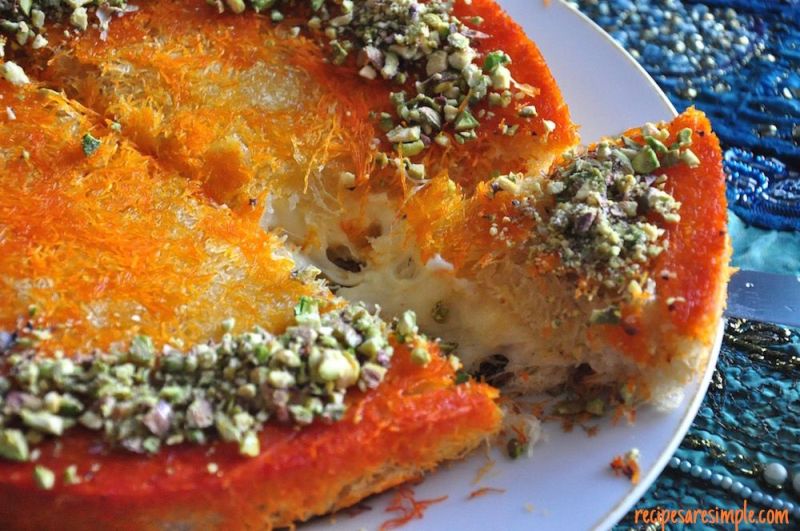
Kunafa (also spelled kanafeh or knafeh) originated in the city of Nablus in Palestine. It’s now popular throughout the Middle East, North Africa, and many parts of Asia. This sweet pastry is made by layering thin strands of crispy phyllo dough that have been shredded and then baked with a decadent cheese or cream filling.
The pastry is then soaked in a sweet sugar syrup flavored with rose water or orange blossom. Some versions add crushed pistachios, coconut flakes, or other nuts on top for extra flavor and crunch. The result is a decadent dessert with contrasting textures and flavors that melt in your mouth!
Kunafa is commonly served during Ramadan, at weddings, and on other special occasions in many Middle Eastern cultures. It’s considered one of the most popular sweets in Arabic cuisine. The traditional shapes are circular or rectangular, but you can also find kunafa in cones, bitesize pieces, or rolled up with fillings.
The Flavor Profile: Sweet, Savory, and Nutty Tastes
So what makes kunafa stand out from other pastries? Here’s an overview of the main elements that create its signature taste:
Sweet and Sticky Syrup
The simple syrup poured over kunafa is sweet and viscous, made from sugar dissolved in water and flavored with rose water or orange blossom water. This gives the pastry a pronounced sweetness along with aromatic floral notes. The syrup permeates the crispy outer layers, making them sticky and sweet.
Savory Cheese Filling
The most traditional and popular filling is a mild white cheese like Nabulsi cheese, mozzarella, or ricotta. This provides a salty, savory contrast to the sweetness of the phyllo layers and syrup. The melted cheese filling is creamy, soft, and luscious.
Nutty Crunch
It’s common to add chopped or crushed pistachios to kunafa before serving. This adds delightful crunch and nutty flavor. Other nuts like walnuts, almonds, or coconut flakes can also be used.
Unique Texture
From the crispiness of the phyllo on the outside to the soft melted cheese within, kunafa has an intriguing contrast of textures. As you bite through the top layer, you experience crispy flakes that give way to the smooth, gooey filling.
Custard and Cream Variations
While the classic is made with cheese, some versions of kunafa use a sweet custard or cream filling. The eggs and milk create a pudding-like texture that is wonderfully smooth and creamy. Flavorings like vanilla, rose water, or mastic gum add subtle aromatic flavors.
Custard kunafa has a pronounced sweet taste compared to the more balanced salty-sweet cheese versions. The creamy filling paired with the syrup makes each bite melt-in-your-mouth delicious!
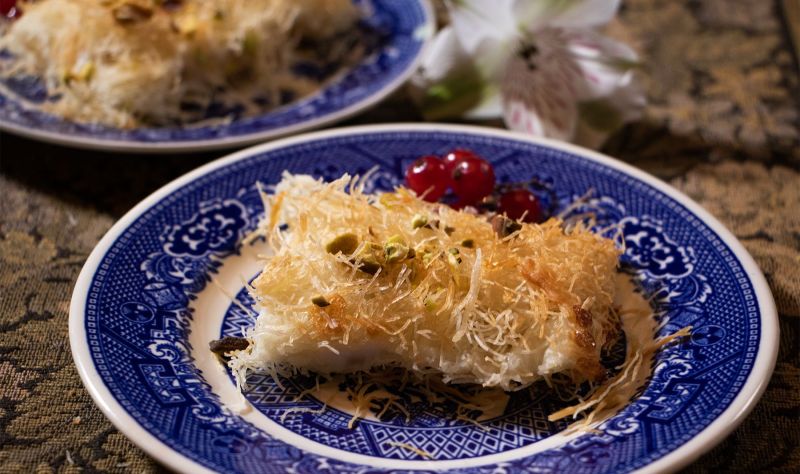
Preparation Methods Impact Flavor
How kunafa is made can also impact its final taste and texture. Here are some common preparation methods:
- Baked: The traditional technique of baking kunafa in an oven makes the outer pastry golden brown and crisp.
- Pan-Fried: Frying in ghee or butter adds extra richness while the high heat crisps up the dough.
- Grilled: Grilling over charcoal gives it a lovely smoky, charred flavor.
- Microwave: Microwaving is a quick, convenient cooking method that softens up the dough but doesn’t make it quite as crispy.
- Frozen: Pre-made frozen kunafa just needs quick baking or microwaving, but can lose some textural quality.
For the crispiest, most authentic result, baking or pan frying is best. But microwave or thawed frozen kunafa can still deliver on the delicious filling!
Kunafa Taste Exploration: Sweet Add-Ins and Savory Fillings
While the classic recipe is perfect on its own, there are many ways to vary kunafa and customize the flavors you love most.
Fruity and Sweet Add-Ins
Blend refreshing fruit flavors into your kunafa:
- Fresh berries, mango, or citrus add bright acidic notes that balance the sweetness.
- Dried fruits like raisins, cranberries, apricots, or dates lend chewy sweetness.
- Purees, compotes, or preserves made with fruit swirl delicious fruit flavor into the custard.
- Nutty fruits like almond and coconut also pair wonderfully in custard or cream fillings.
- Floral waters like rose, orange blossom, or jasmine infuse the syrup with subtle perfumed aromatics.
Savory Cheese and Herb Fillings
Switch out the cheese for more tang and complexity:
- Goat or feta cheese have bolder, tangier flavors that stand up to the sweetness.
- Ricotta or mascarpone have a lighter, creamier texture.
- Blending in fresh herbs like mint, basil, dill adds refreshing herbal notes.
- Spices like za’atar, cumin, or sumac give a kick of savory flavor.
- For ultimate indulgence, use clotted cream for a texture like butter.
Enjoying Kunafa for Maximum Flavor
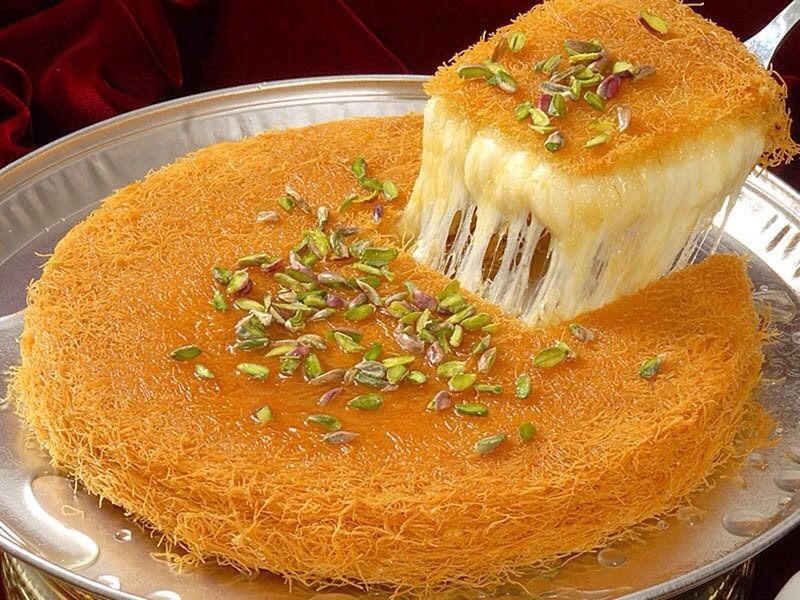
To really appreciate the full range of flavors, textures, and aromas of this Arabic favorite, follow these tips for serving and eating kunafa:
- Cut kunafa into small triangles or squares so each bite includes some of the phyllo, filling, nuts, and syrup.
- Let it sit for 2-3 minutes after adding syrup so the pastry can absorb it, but don’t let it get soggy.
- Enjoy kunafa at room temperature when the contrasting temperatures of the warm filling and cool phyllo are most pronounced.
- Pair it with Turkish coffee or strong black tea to match the intensity of its sweetness.
- Savor each bite slowly, noticing how the flavors evolve from crispy to creamy to nutty.
- Share kunafa family-style straight from the pan for an interactive, conversational dining experience.
5 Tips for Making Kunafa Taste Even Better
While traditional recipes are hard to improve upon, there are some tweaks to make your homemade kunafa even more mouthwatering:
- Use high-quality butter or ghee for frying, making the pastries extra rich and flaky.
- Experiment with nut varieties like pistachios, cashews, hazelnuts, or walnuts for crunch.
- Double up on the phyllo layers for ultra crispiness to contrast the filling.
- Brush with egg wash before baking for golden brown color.
- Flavor the syrup with interesting extracts like rose, vanilla, or almond.
Kunafa vs. Other Arabic Pastries
If you’ve tried similar looking pastries, how does kunafa stack up in terms of taste?
Kunafa is distinct from basbousa, another Middle Eastern sweet made with semolina or farina. Basbousa has a cake-like soft crumb with floral sweetness rather than phyllo.
Baklava shares phyllo dough with kunafa but the chopped nuts are mixed directly into the layers rather than used as topping. It tastes like butter, honey, and nuts rather than featuring a gooey cheese or custard center.
Kadaif is made from shredded phyllo like kunafa but formed into nest-like shells that are filled with nuts rather than cheese. It often uses a butter-base rather than sugar syrup.
So while kunafa may look like other regional desserts, the taste experience is unique!
Frequently Asked Questions About Kunafa
For those new to kunafa, there are some common questions about how to approach this indulgent pastry:
Can you freeze and reheat kunafa?
Freezing pre-baked kunafa is not recommended, as thawing will ruin the delicate crispy texture of the phyllo dough. However, you can refrigerate it for 2-3 days without losing too much quality. Reheat in the oven or toaster oven to crisp back up (but not too hot or the filling will get grainy!)
What’s the difference between phyllo dough and puff pastry?
Phyllo dough is made from many paper-thin layers of flour and water rolled out very thin. Puff pastry has fewer layers with chunks of butter between them to create flaky pockets when baked. Both are crispy, but phyllo has more delicate crispness.
Is there a vegan version of kunafa?
Yes, for a dairy-free option, the cheese can be replaced with sweet potato or tofu “cheese” or even a non-dairy milk custard. A vegan butter substitute works great for frying the phyllo to perfect crispiness.
My Final Take on Kunafa’s Irresistible Taste
Kunafa truly occupies a category of its own in the world of desserts. There’s nothing quite like the first bite of its crispy exterior giving way to melty cheese or custard filling, soaked in floral sweet syrup. It’s an experience for the senses – the satisfying crunch, the rich creaminess, the aromatic flavors.
No wonder kunafa is such a celebrated part of food culture in the Middle East – it’s the ultimate indulgent treat for celebrations. And why it’s becoming popular far beyond its region of origin to satisfy global dessert cravings.
So next time you come across kunafa at a Middle Eastern bakery or restaurant, relish the opportunity to try this unique pastry. Let the symphony of nutty, crispy, creamy flavors transport your tastebuds. This is one dessert you won’t be able to get out of your mind – or resist going back for seconds!
